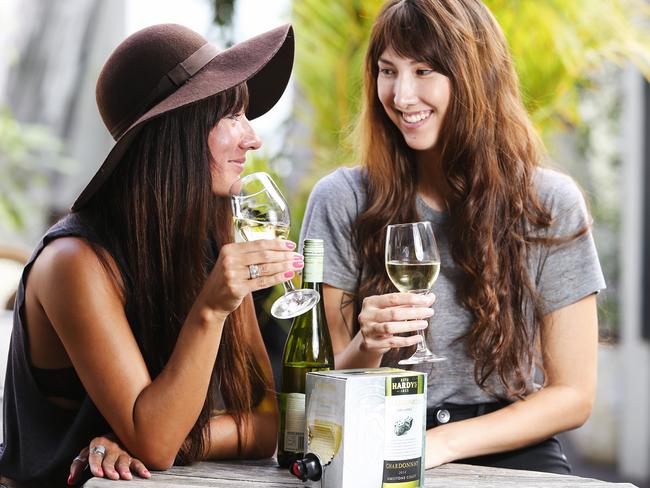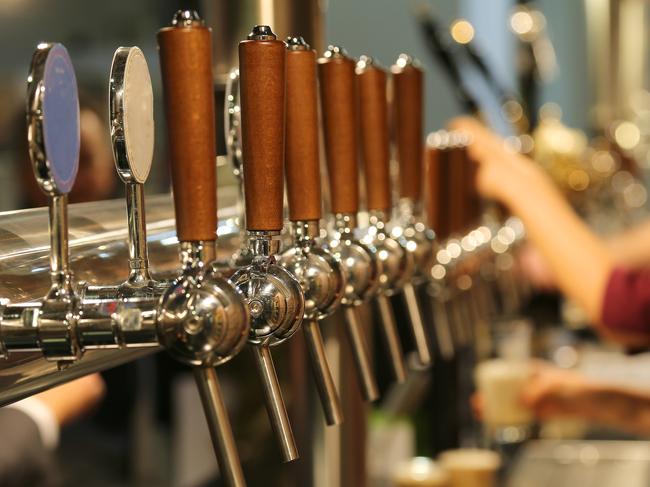Floor price on alcohol: Plan could see cask wine, beer prices soar
The cost of cask wine would soar under a controversial plan that would change how booze is priced to combat a rise in hospitalisations for alcohol abuse.
Health
Don't miss out on the headlines from Health. Followed categories will be added to My News.
Exclusive: The price of cheap cask wine could double and the cost of take away beer rise under a national plan to introduce an alcohol floor price to cut harmful drinking habits.
Some alcohol is now cheaper than bottled water and new research has found mandating a floor price of $1.30 per standard drink could slash hospitalisations, ambulance call outs and assaults associated with problem drinking.
The Northern Territory became the first jurisdiction to introduce a floor price, of $1.30, in 2018 with the aim of reducing alcohol-related violence.
La Trobe University researchers have found it could reduce drinking in Australia by 1.5 standard drinks per week on average and 12 drinks per week for harmful drinkers.

Researcher Dr Jason Jiang said the price of alcohol had been unchanged for the past 30 years while the number of hospitalisation, emergency department presentations and assaults had increased.
His study, funded by the National Health and Medical Research Council and published in the journal Addiction, investigated eight policy changes that could work to moderate alcohol consumption and concluded an alcohol floor price of $1.30 per standard drink was the best way to do so.
Alternatively the Federal Government could look at imposing a uniform excise rate on all alcohol a move that would see taxes on wine rise, he said.
Introducing a minimum price of $1.30 per standard drink across Australia could see alcohol consumption fall by 10.7 per cent (1.5 standard drinks per week) on average; 14.2 per cent (12 standard drinks per week) among harmful drinkers; and 3 per cent (0.2 standard drinks per week) among moderate drinkers
Applying a uniform excise tax rate of $0.97 per standard drink (equal to the 2013 spirits tax rate) across all beverages could generate a similar impact to the $1.30 Minimum price policy, but with greater impact on moderate drinkers, with an 8.8 per cent fall in consumption (0.4 standard drinks per week).

Under the minimum price plan, cheap cask and cheap bottled wine would be most affected while the policy change would have little impact on the price of alcohol sold in pubs, clubs and restaurants which usually retails over the minimum price threshold proposed.
Cask wine currently sells for around 65 cents per standard drink and this would rise to $1.30 per standard drink under the proposal.
This could push up the price of a 2 litre cask of wine from $14 to around $26.
The price of cheap take away beer could also rise by 23-28 cents per standard drink.
Alcohol manufacturers and retailers would receive a windfall from the change in policy as they would benefit from the higher prices charged for alcohol, Dr Jiang said.
A spokesman for Alcohol Beverages Australia said a floor price was “a blunt instrument that forces the majority of responsible drinkers to pay more and takes a proportionally greater amount from those on lower incomes”.
ABA CEO Andrew Wilsmore said “the buying habits of heavy drinkers and those with substance abuse problems do not respond to price increases”.
The Northern Territory imposed a floor price on alcohol of a similar magnitude 12 months ago.
A study published in the Medical Journal of Australia found the number of hospital presentations linked to acute alcohol misuse plunged by 54 per but the decline in hospitalisation associated with chronic alcohol misuse was not statistically significant.
The NT introduced a raft of other changes around alcohol including higher police presence at liquor outlets which makes it difficult to understand whether the floor price alone was responsible for the decline.

Tony Battaglene the CEO of the Australian Wine Federation said his industry had never supported a minimum unit price for alcohol “because we don’t think it would have any effect on problem drinkers”.
Unpublished retail data suggested in the Northern Territory minimum people were turning to stronger forms of alcohol to get more bang for their buck or illicit substances, he said.
Average weekly alcohol spending by harmful drinkers was 11 times higher than spending by moderate drinkers ($178.40 vs $20.90).
Researchers also found 62 per cent of alcohol consumed by Australian drinkers was retail/take-away regular beer and bottle wine.
Retail Drinks, an organisation representing liquor sellers said its data showed while the alcohol floor price saw a 75 per cent crash in sales of cask wine and full strength beer there was a 5 per cent increase in sales of spirits.
“The total volume of alcohol sold in NT reduced for the period, consistent with the trends throughout Australia that people are consuming less, Retail Drinks CEO Julie Ryan said.
However, against a backdrop of the total amount of alcohol sold reducing, the total volume of “pure” alcohol, in other words the number of standard drinks consumed, increased as people turned to heavier alcohol like spirits, she said.
MORE NEWS:
The incident that made Sam Newman give up booze
More Aussies worried about climate change
Video owner of missile attack arrested in Iran
The Foundation for Alcohol Research and Education which works to stop alcohol harm backed a minimum price.
Trish Hepworth, FARE Director of Policy and Research said “ee strongly advocated for the introduction of the MUP in the Northern Territory, which has been in place for 12 months, and has already contributed to improving the community’s safety, health and wellbeing, by reducing the instances of hospital emergency department presentations and assault.”
Originally published as Floor price on alcohol: Plan could see cask wine, beer prices soar
